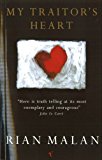In this second session on writing history for the commercial market, we will look at how to write narrative history by using creative writing techniques to write the ‘story’ of your history.
Whose story is it?
The most marketable and interesting form of written history, is history about people. Your research will have unearthed many potential ‘characters’. Which ones are you going to feature in your story? Articles are best written when focusing on a single ‘protagonist’ or a small group. In a book you can deal with more characters, but they need to be linked. There are a number of questions that you can ask that are used by fiction writers to develop a character. By adopting this approach you will help to bring your personalities to life and to present them in a lively, readable historical narrative.
Who is your protagonist?
 This may be an individual, a family, a group, a community, a class or a nation. It could also be an institution and the people associated with it. One of my students has written the narrative history of his local bowling club and hopes to get it published as a booklet. In his ‘story’ the bowling club itself is the main character and the people who drift in and out of it the supporting cast. Rian Malan’s family history My Traitor’s Heart, which is a lens on South African white guilt, has his whole family (and by association, all white South Africans) as the protagonist. If a Pirate I Must Be by Richard Sanders, has the infamous pirate of the Caribbean, Bartholomew Roberts as his protagonist.
This may be an individual, a family, a group, a community, a class or a nation. It could also be an institution and the people associated with it. One of my students has written the narrative history of his local bowling club and hopes to get it published as a booklet. In his ‘story’ the bowling club itself is the main character and the people who drift in and out of it the supporting cast. Rian Malan’s family history My Traitor’s Heart, which is a lens on South African white guilt, has his whole family (and by association, all white South Africans) as the protagonist. If a Pirate I Must Be by Richard Sanders, has the infamous pirate of the Caribbean, Bartholomew Roberts as his protagonist.
What is their goal?
Rian Malan, as the central character in his own book, wants to come to terms with his family’s racist past and find a place in the ‘new’ South Africa. Bartholomew Roberts wants fame and fortune and to avoid getting caught. These are goals that drive our historical characters in their real lives but also give their stories forward momentum on the page. If I were to write the life story of my grandma Betty Veitch, her central goal would be to shake off her parents’ working class mantle and find respect as an independent business woman. What is your central character (or protagonist’s) goal?
How do they achieve it?
What steps did they take to achieve their goal? Remember, a main character who takes destiny in their own hands is far more compelling than one who is simply swept along by historical fate. Even if they are swept along, how did they attempt to navigate their way? Even if they never achieve their goal, their attempts to do so will drive your historical narrative forward.
What or who stands in their way?
In fiction this would be the ‘antagonist’. This does not have to be a person. Circumstances, in and out of your main character’s control, may block their efforts to achieve their goal. In writing my family history, my grandma’s marriage to my grandfather, a man beset with illness who died in his 40s, became an inadverdent ‘obstacle’ to her goal. How did she deal with it?
How are they affected by historical events?
On the broader stage of history and society, what events impacted, positively or negatively on your main character and the pursuit of their goal? Again, with my grandmother, the Second World War affected her pursuit of a business career.
How do they change historical events (if at all)?
My grandmother did not change or have an impact on historical events, but your main character (person, community, institution etc) might have. If so, how?
What is their legacy?
How was the world changed by your character living in it? The world may be as small as your family or as big as the earth. The fact that you are writing about this person suggests that a legacy has been left. What is it?
- A fond memory?
- An inspiration?
- A change in circumstance?
- A change in perspective?
- A change in legislation?
- Or simply a regret?
Join us next time for tips on using timelines to structure your historical narrative.
